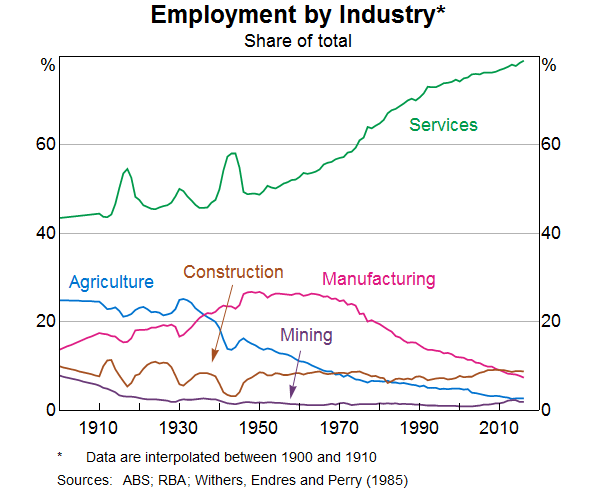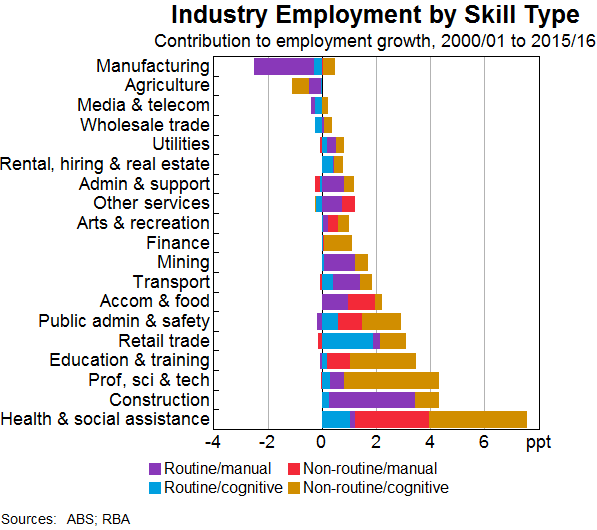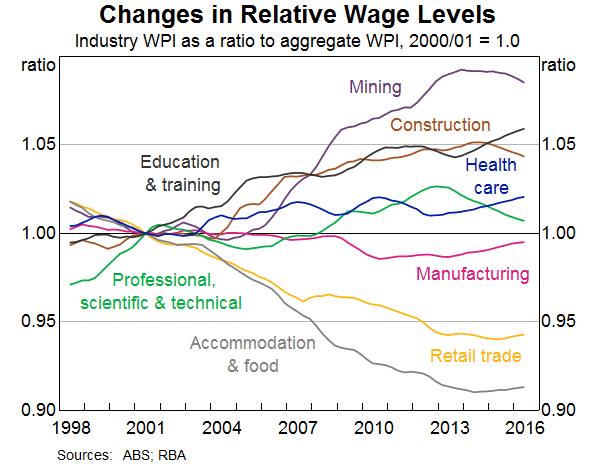In a CEDA speech “The Changing Nature of the Australian Workforce“, Alexandra Heath, Head of Economic Analysis Department, RBA has highlighted the rise in services sector employment. Much of this is related to a burgeoning healthcare sector, thanks to demographic shifts. Then we see growth in property, and property related sectors. Many other sectors are shrinking.
But we would stress that wages have risen little in the healthcare sector, which is one reason why household income is static, and employment in this sector, (and the property sector), whilst important, does not create new wealth, it merely transfers existing wealth. This lack of new wealth creation is why growth is under pressure. This is a the structural issue which needs to be addressed.
The decline in the share of routine manual jobs in industries such as agriculture and manufacturing as a result of technological change has had a long history (Graph 2). The offsetting increase has been in service sector jobs.
Graph 2
The health care & social assistance industry has made the largest contribution to employment growth over the past 15 years or so, and most of this has been in non-routine work (Graph 3). After health care, the two industries that have made the largest contributions to growth in non-routine jobs over this period are professional, scientific & technical services and education & training.
Graph 3
Some of the increase in health care employment is related to the ageing of the population. Similar demographic trends are also likely to have contributed to the strong increase in employment in social assistance because it includes in-home support services. The stability of relative wages in the health sector over most of the past 15 years suggests that the expansion of demand for health care workers has been more or less met by an increase in the number of people who are able to work in the sector (Graph 4). The vocational education and training system has played an important role in providing qualifications in a range of these occupations, including child care, aged care and occupational therapy.
Graph 4
In contrast, education & training, construction and mining have all experienced a trend increase in their relative wages over the past 15 years or so. This suggests that the supply of workers with the right skills has not kept up with the increase in demand from these industries. In the case of mining and construction, the mining boom is an important part of the story (Kent 2016).
The relative wages for professional, scientific and technical services increased over the 5 years to 2013, but have since fallen. One possible explanation for this is that there was some difficulty meeting increasing demand and that supply of qualified workers responded with a lag. Another possibility is that rapid technological change has meant that some of the growth in employment in this industry has been in entirely new jobs that take some time to be captured in some wage measures.



